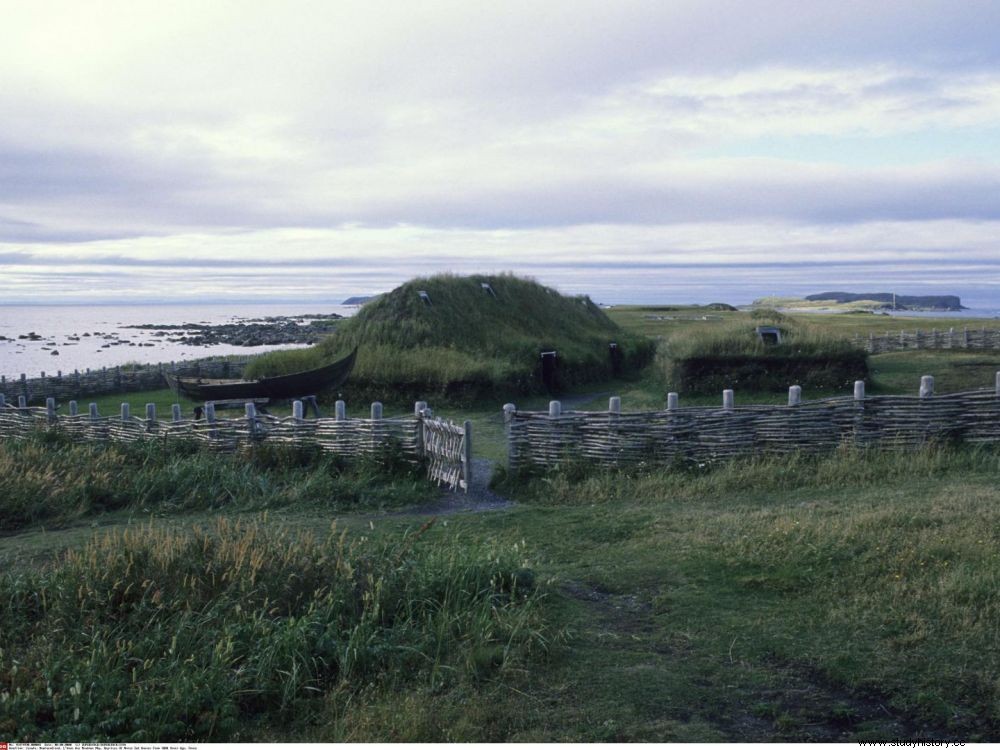L'Anse aux Meadows, in northern Newfoundland, is the only undisputed site of an ancient European presence in America. However, its occupation by the Vikings could have been longer, according to a new study.

Reconstruction of Viking dwellings at the Anse aux Meadows site in Newfoundland (Canada).
Long before the Genoese Christopher Columbus set foot on the American continent (1492), the Vikings had preceded him by at least 500 years. Discovered during the 1960s, Anse aux Meadows, in the north of Newfoundland (Canada), revealed the existence of eight dwellings identical in all respects to those that Scandinavian navigators were building at the same time in Iceland or Greenland. . Studied at the time by the Norwegians Helge and Anne Stine Instad, the establishment of this American colony yielded around a hundred objects, including iron nails and rivets, a whetstone, a bronze coat pin or one more forge - so many testimonies of a Viking occupation that would have lasted thirty years. However, it is a reflection on these conclusions that an article published in the Proceedings of the National Academy of Sciences proposes. (PNAS) of July 15, 2019.
After studying the remains of a peat bog located 30 meters east of the now famous UNESCO World Heritage Site, Paul M. Ledger of Memorial University of Newfoundland and his team believe that the presence Viking in Newfoundland may have been longer than previously thought, going well over a century! Radiocarbon dating by Paul M. Ledger and colleagues, and Bayesian modeling of the dataset (a statistical approach), would place this level of Norse settlement in the late 1100s or early 1200s. a presence in North America later than that established until then, just around the year one thousand.
An informative review of sediment cores
In August 2018, plant and animal remains collected from peat samples collected for paleoenvironmental analyzes reported unexpected evidence of activity. By examining sediment cores, the researchers unearthed a "cultural horizon":"a layer of trampled mud [by humans and animals Editor's note], littered with wood debris, charcoal, pollen, abundant organic waste, and insects" . Several of these elements were not native to North America, thus Aciota quadrata (Zetterstedt), a species never recorded in Newfoundland as well as the beetle Simplocaria metallica (Sturm), only described in Greenland. According to the authors of the article, the microscopic contents identified in this peat deposit would resemble, by their density, (distinguishing them from possible indigenous occupations of ancestors of the Beothuks and Dorsets), to those collected on the outskirts of other northern settlements. well documented in Greenland and Iceland.
In their publication, the scientists note that these "layers of peat may not be as evocative as artifacts such as a rimmed bronze pin or a finely worked lithic projectile point. However, they open up new horizons to examine the environmental legacy of inter- and intra-continental movement of people in North America before 1492" . The material traces found at Anse aux Meadows suggest the existence of a small Scandinavian community, with intermittent occupation of the site from the 11 e century. Had the site then become the starting point for larger maritime explorations? When the Vikings criss-crossed the North Atlantic in search of new lands to cultivate. The question of their eclipse from these regions still remains an enigma.
